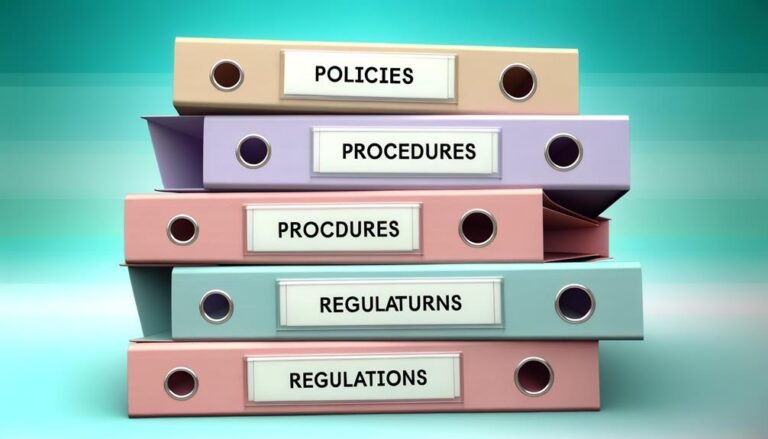Advanced Compliance Investigations and Crisis Management
Table of Contents
ToggleEnsuring Organizational Resilience
In today’s dynamic business environment, organizations face a variety of risks that can lead to compliance violations and crises. The ability to conduct thorough and efficient compliance investigations, coupled with effective crisis management, is essential for mitigating damage and ensuring organizational resilience. This module explores the critical aspects of advanced compliance investigations and crisis management, including conducting investigations, planning for and responding to crises, utilizing forensic accounting and data analysis, and communicating effectively during crises.
Conducting Thorough and Efficient Compliance Investigations
Compliance investigations are a fundamental component of any robust compliance program. When potential violations occur, organizations must be prepared to conduct thorough and efficient investigations to uncover the facts, determine the extent of the issue, and implement corrective actions.
The Importance of Compliance Investigations
Compliance investigations are essential for several reasons. First, they allow organizations to identify and address violations of laws, regulations, and internal policies. Prompt and effective investigations can prevent further harm, limit legal and financial liability, and protect the organization’s reputation.
Second, compliance investigations demonstrate to regulators, stakeholders, and employees that the organization takes its compliance obligations seriously. A well-conducted investigation reinforces the message that misconduct will not be tolerated and that ethical behavior is a priority.
Finally, compliance investigations provide valuable insights that can help organizations strengthen their compliance programs. By understanding the root causes of violations, organizations can implement measures to prevent similar issues from occurring in the future.
Steps in Conducting Compliance Investigations
Conducting a compliance investigation involves several key steps:
- Receiving and Assessing the Allegation: The investigation process begins when a potential compliance issue is identified, typically through a whistleblower report, internal audit, or external complaint. The first step is to assess the credibility and seriousness of the allegation. This assessment determines whether a formal investigation is warranted.
- Planning the Investigation: Once the decision is made to proceed with an investigation, it is crucial to develop a clear plan. The investigation plan should outline the scope of the investigation, identify key objectives, and define the roles and responsibilities of the investigation team. It should also include a timeline and a strategy for gathering and preserving evidence.
- Gathering and Analyzing Evidence: Evidence collection is a critical phase of any compliance investigation. This may involve reviewing documents, conducting interviews, analyzing financial records, and examining digital data. It is essential to gather evidence in a manner that is legally compliant and preserves its integrity for potential use in legal proceedings.
- Conducting Interviews: Interviews are often a central component of compliance investigations. They provide an opportunity to obtain firsthand accounts of the events in question and to clarify discrepancies in the evidence. Interviews should be conducted in a fair and impartial manner, ensuring that all relevant parties have the opportunity to provide their perspectives.
- Documenting Findings: Throughout the investigation, it is important to maintain detailed records of all actions taken and evidence collected. This documentation serves as a record of the investigation’s integrity and can be critical if the investigation’s findings are challenged.
- Making Determinations and Recommending Actions: Based on the evidence collected, the investigation team must make a determination regarding the validity of the allegations. If a violation is confirmed, the team should recommend corrective actions, which may include disciplinary measures, policy changes, or additional training.
- Reporting the Findings: The final step in the investigation process is to report the findings to the appropriate stakeholders, including senior management, the board of directors, and, if necessary, external regulators. The report should be clear, concise, and objective, providing a comprehensive overview of the investigation and its conclusions.
Best Practices for Compliance Investigations
To ensure that compliance investigations are conducted effectively, organizations should adhere to the following best practices:
- Maintain Confidentiality: Protecting the confidentiality of the investigation is critical to prevent retaliation, preserve evidence, and safeguard the integrity of the process.
- Ensure Impartiality: Investigations must be conducted impartially and without bias. This may require involving external investigators or legal counsel to ensure objectivity.
- Act Promptly: Timely investigations are essential to prevent further violations and mitigate risks. Delays can lead to additional harm and complicate the investigation process.
- Follow Legal and Regulatory Requirements: Compliance investigations must adhere to all relevant legal and regulatory requirements, including those related to data privacy, employment law, and whistleblower protection.
Crisis Management Planning and Response
Crises are inevitable in the life of any organization, whether they stem from compliance violations, cybersecurity breaches, natural disasters, or other unforeseen events. How an organization prepares for and responds to a crisis can make the difference between recovery and lasting damage.
The Importance of Crisis Management
Crisis management involves planning for potential crises, responding effectively when they occur, and recovering in a way that minimizes harm and restores normal operations. A well-executed crisis management plan can protect an organization’s assets, reputation, and stakeholder relationships.
Organizations that fail to manage crises effectively can suffer severe consequences, including financial losses, legal penalties, and long-term reputational damage. In some cases, a poorly managed crisis can even threaten the organization’s survival.
Components of a Crisis Management Plan
A comprehensive crisis management plan should include the following components:
- Crisis Identification and Risk Assessment: The first step in crisis management is identifying the types of crises that could impact the organization and assessing the associated risks. This involves evaluating both internal and external factors that could lead to a crisis, such as operational vulnerabilities, regulatory changes, or geopolitical events.
- Crisis Response Team: A crisis response team should be established to lead the organization’s efforts during a crisis. This team typically includes representatives from key functions such as legal, compliance, communications, IT, and human resources. The team should have clear roles and responsibilities and be empowered to make decisions quickly.
- Crisis Communication Plan: Effective communication is critical during a crisis. A crisis communication plan outlines how the organization will communicate with stakeholders, including employees, customers, regulators, and the media. The plan should include pre-approved messaging templates, a designated spokesperson, and protocols for managing social media.
- Business Continuity and Recovery: The crisis management plan should include strategies for maintaining critical business operations during a crisis and for recovering as quickly as possible afterward. This may involve activating backup systems, relocating operations, or temporarily suspending non-essential activities.
- Training and Drills: Regular training and drills are essential to ensure that the crisis response team and other key personnel are prepared to respond effectively in the event of a crisis. These exercises help identify gaps in the plan and improve the organization’s readiness.
Effective Crisis Response
When a crisis occurs, the organization’s response should be guided by the principles of speed, transparency, and accountability. The initial hours and days of a crisis are often the most critical, and the organization’s actions during this period can have a lasting impact on the outcome.
Key steps in an effective crisis response include:
- Activate the Crisis Response Team: The crisis response team should be activated immediately, and all relevant personnel should be notified. The team should convene to assess the situation, determine the immediate priorities, and implement the crisis management plan.
- Communicate Early and Often: Transparent and timely communication is essential to managing stakeholder expectations and preventing the spread of misinformation. The organization should provide regular updates on the situation and the steps being taken to address it.
- Focus on Containment: The initial focus of the crisis response should be on containing the situation and preventing further harm. This may involve isolating affected systems, securing physical locations, or halting certain operations.
- Document the Response: Throughout the crisis, it is important to document all actions taken, communications made, and decisions reached. This documentation is critical for legal and regulatory purposes and for conducting a post-crisis review.
- Evaluate and Adapt: As the situation evolves, the crisis response team should continuously evaluate the effectiveness of the response and make adjustments as needed. This may involve reallocating resources, changing communication strategies, or updating response plans.
Forensic Accounting and Data Analysis
In the context of compliance investigations and crisis management, forensic accounting and data analysis are invaluable tools for uncovering financial misconduct, detecting fraud, and analyzing complex data sets to identify patterns of non-compliance.
What is Forensic Accounting?
Forensic accounting involves the use of accounting, auditing, and investigative skills to examine financial records and transactions for evidence of misconduct or fraud. Forensic accountants are often called upon to assist in compliance investigations, legal disputes, and crisis management situations.
Forensic accounting is particularly useful in cases involving financial fraud, embezzlement, corruption, and other financial crimes. Forensic accountants use their expertise to analyze financial data, trace the flow of funds, and identify irregularities that may indicate wrongdoing.
The Role of Data Analysis in Compliance Investigations
Data analysis is the process of examining large volumes of data to uncover patterns, trends, and anomalies that may indicate non-compliance or misconduct. In today’s digital age, organizations generate vast amounts of data, making data analysis an essential tool for compliance investigations and crisis management.
Data analysis can be used to:
- Detect Fraud: By analyzing financial transactions, payroll records, and expense reports, data analysis can help identify suspicious activities that may indicate fraud.
- Monitor Compliance: Data analysis can be used to monitor compliance with regulations, such as anti-money laundering (AML) requirements or trade sanctions. By analyzing transaction data, organizations can identify potential violations and take corrective action.
- Identify Operational Risks: Data analysis can also be used to identify operational risks, such as supply chain disruptions or cybersecurity threats. By analyzing data from multiple sources, organizations can gain a comprehensive view of their risk landscape and take proactive measures to mitigate potential crises.
Best Practices for Forensic Accounting and Data Analysis
To effectively leverage forensic accounting and data analysis in compliance investigations and crisis management, organizations should follow these best practices:
- Integrate Forensic Accounting into the Investigation Process: Forensic accountants should be involved early in the investigation process to ensure that financial data is properly analyzed and preserved.
- Use Advanced Analytics Tools: Advanced analytics tools, such as machine learning and artificial intelligence, can enhance the ability to detect patterns and anomalies in large data sets. These tools can help identify potential compliance issues more quickly and accurately.
- Collaborate with Legal and Compliance Teams: Forensic accountants and data analysts should work closely with legal and compliance teams to ensure that their findings are legally sound and aligned with the organization’s compliance objectives.
- Maintain Data Integrity: It is essential to maintain the integrity of data throughout the analysis process. This includes ensuring that data is accurately collected, securely stored, and properly documented.
Communicating Effectively During Crises
Effective communication is one of the most critical components of crisis management. How an organization communicates during a crisis can significantly impact its ability to manage the situation, maintain stakeholder trust, and recover from the event.
The Importance of Crisis Communication
Crisis communication involves delivering timely, accurate, and consistent information to stakeholders during a crisis. This includes internal communication with employees and management, as well as external communication with customers, regulators, investors, and the media.
Effective crisis communication helps to:
- Manage Stakeholder Expectations: By providing regular updates and clear information, organizations can manage stakeholder expectations and reduce uncertainty.
- Prevent the Spread of Misinformation: In the age of social media, misinformation can spread quickly and exacerbate a crisis. Effective communication helps ensure that accurate information is disseminated and that false rumors are addressed promptly.
- Demonstrate Leadership and Accountability: Transparent communication demonstrates that the organization is taking the crisis seriously and is committed to resolving it. This helps to build trust and confidence among stakeholders.
Key Elements of Crisis Communication
A successful crisis communication strategy should include the following elements:
- Pre-Approved Messaging: Before a crisis occurs, organizations should develop pre-approved messaging templates that can be quickly customized and deployed. These templates should address common crisis scenarios and provide a framework for consistent communication.
- Designated Spokesperson: It is important to designate a spokesperson who will be responsible for communicating with the media and other external stakeholders. This person should be trained in crisis communication and have a deep understanding of the organization’s operations and values.
- Clear Communication Channels: Organizations should establish clear communication channels for disseminating information to different stakeholder groups. This may include email, social media, press releases, and internal messaging platforms.
- Regular Updates: During a crisis, organizations should provide regular updates to keep stakeholders informed of the situation’s progress and the actions being taken. Updates should be timely, accurate, and delivered through appropriate channels.
- Two-Way Communication: Effective crisis communication is not just about delivering information; it also involves listening to stakeholders and responding to their concerns. Organizations should provide channels for stakeholders to ask questions, provide feedback, and express their concerns.
Best Practices for Communicating During Crises
To ensure effective communication during a crisis, organizations should adhere to the following best practices:
- Be Proactive: Don’t wait for stakeholders to come to you with questions. Proactively communicate the situation and what the organization is doing to address it.
- Be Transparent: Honesty is critical during a crisis. If the organization doesn’t have all the answers, it’s better to acknowledge that and commit to providing updates as more information becomes available.
- Be Consistent: Ensure that all communications are consistent across different channels and stakeholder groups. Inconsistent messaging can lead to confusion and erode trust.
- Be Empathetic: Acknowledge the concerns and emotions of stakeholders. Show that the organization understands the impact of the crisis and is committed to supporting those affected.
- Be Prepared: Crisis communication should be part of the organization’s broader crisis management plan. Regular training and drills should be conducted to ensure that everyone involved is prepared to communicate effectively during a crisis.
Conclusion
Advanced compliance investigations and crisis management are essential for protecting organizations from the potentially devastating effects of compliance violations and crises. By conducting thorough and efficient investigations, preparing for and responding to crises, utilizing forensic accounting and data analysis, and communicating effectively during crises, organizations can navigate challenges with resilience and maintain the trust of their stakeholders.
In an increasingly complex and unpredictable world, the ability to manage crises and ensure compliance is not just a regulatory requirement—it is a strategic imperative that can determine an organization’s long-term success and sustainability.







